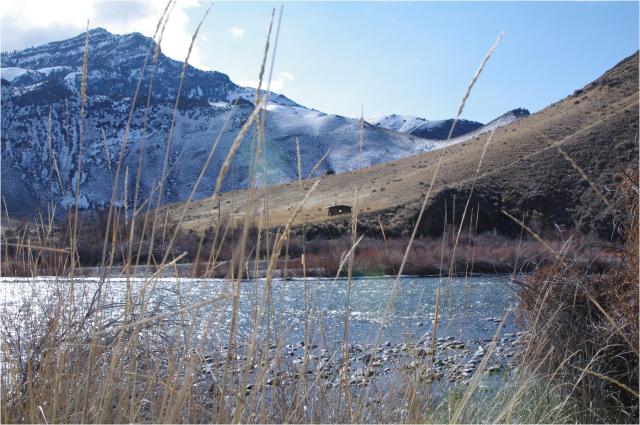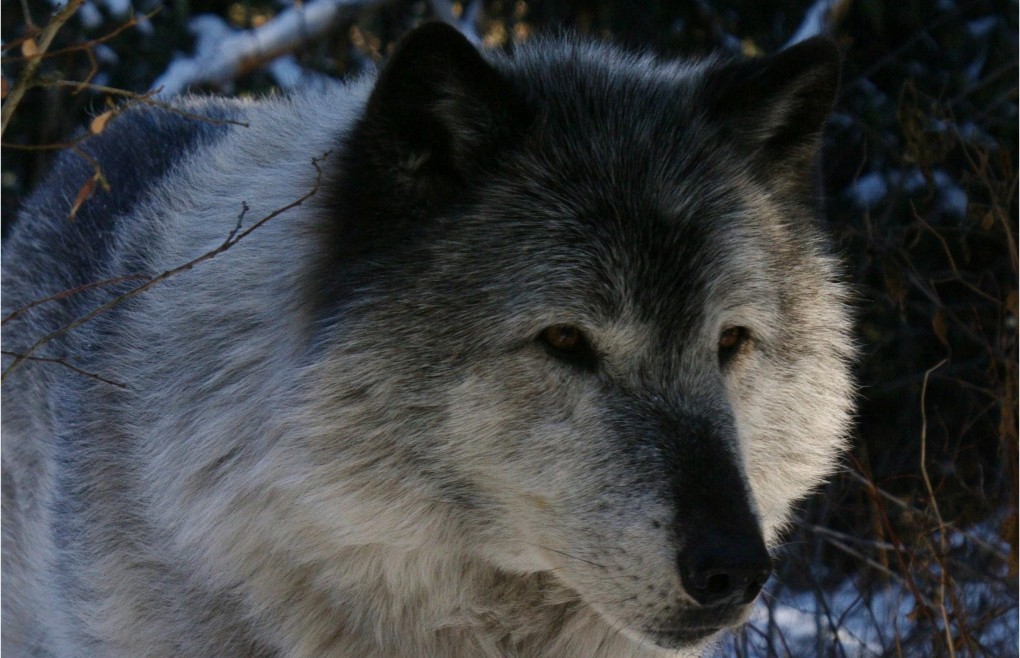
One of the interviews for my fieldwork was with a pro-wolf rancher’s wife, not an easy thing to come by. I’ll call her Bev. Bev’s family has been working the same Idaho land for 140 years, they are eighth generation. When first settling the land, their predecessors lived in caves on the property. Their history with, and reverence for, this large piece of arid land is difficult to describe.
A decade or so back, environmentalists, especially those focusing on water issues, began criticizing ranchers as well as policies which allow cattle to graze on public land. Riparian zones were being decimated. Riparian zones are areas along bodies of water that are dense with plants and trees, such as willow or aspen. They serve to filter water and control erosion which are fundamental for clean water and healthy habitat for fish, birds, animals, plants, us, ect.. Environmental groups like Western Watershed were/are concerned about cattle thrashing riparian zones. When Bev found out about these detrimental effects of cattle ranching she researched what her options were to take better care of their land, ultimately finding holistic land management http://www.holisticmanagement.org/. She has since restored riparian zones on their property to better than they were when she got there.
Bev started our wolf interview by recounting the mind-boggling amounts of massive buffalo stampeding the west a century or two back. Wolves ran, and hunted, these immense creatures (which is amazing in itself). By keeping these ungulates (hoved animals) moving, wolves protected the land from being overgrazed and prevented riparian zones from becoming lounging spots. Bev’s historical account coincides with recent scientific findings in Yellowstone N.P. showing significant improvements in riparian zones following the reintroduction of wolves. Bev believes that when this constant movement is mimicked in cattle grazing it is actually good for the earth. With frequent movement, cattle can’t eat enough grass in one place to damage root systems of plants. Strong roots usually make for strong plants helping to create firm land and thus clean water. Cattle also add, and mush in, a very beneficial amount of fertilizer (poop) to the earth; ultimately making the ground healthier than when they got there, if they don’t overstay their welcome. Bev and her husband now move their cattle between small grazing plots on a daily basis.
Beavers are another important part of the equation for clean water. An old family book written by Bev’s relatives’ documents the extensive beaver damns along the river that runs through their property. Bev says they haven’t seen beavers since fur trapping wiped them out last century. She feels that beaver damns played/play a large role in adding structure to the river. This structure slows, and controls, the flow of water, significantly reducing erosion, especially in riparian zones. Since the wolf reintroduction, Yellowstone ecologists have found more beavers, and beaver damns in Yellowstone. Beaver habitat has most likely improved because ungulates no longer lounge in riparian zones; it’s not safe with wolves around. Beavers can now return to their natural habitat and have materials to work with for building damns.
It is important to note that Bev’s family has not had any wolf encounters. This is an argument used against her pro-wolf stance. The predators they have dealt with are coyotes and rattlesnakes. Regarding coyotes, their practice is to take cattle that have died, for whatever reason, and leave them up on a hill behind their house. The coyotes eat the cattle there and leave their ranch alone. This has worked for as long as she can remember. Bev thinks that they understand and respect this notion of boundaries and territory. This makes sense if we stop to think about how coyotes, as well as wolves, exist within their own very strict boundaries. Rattle snakes are what really scared her. She used to find them on her back deck quite often. With time, she learned that they don’t want to strike and if you simply tap the deck behind them in the direction you want them to move, they do. If Bev and her family do experience wolf depredations, she feels that it is appropriate to have the option to use lethal measures, but only if necessary.
Bev looks forward to the lessons in land and water restoration associated with the reintroduction of wolves. A huge, yet unusual asset is her ability to use her family’s historical knowledge to find ways in which they can live harmoniously with the land and all of its creatures. It is her duty is to protect these things and ensure that they are intact, if not better, for generations of her family to come.
There are not many people around like Bev and her family anymore. In this regard, you could say that Bev’s culture is somewhat endangered. Darrell A. Posey (1996) discusses the parallels between cultural and biological destruction. Countries rich with biological diversity are usually accompanied by indigenous peoples that manage, maintain, and defend the land against destruction as a means for continued survival on natural resources. Indigenous people’s roles in conserving biodiversity have been consistently underestimated due to a failure to recognize co-dependent relationships between humans and nature. This is often due to a ‘language barrier’ between science and indigenous knowledge; it is hard to document historical knowledge of nature. However, scientists are discovering that what they thought were wild areas, are actually the products of co-evolutionary relationships between humans and nature. In other words, we are doing good things too, we just have to find them.
Following an amazing interview, this family’s hospitality blew me away yet again when they offer me a bed to sleep in that night. I declined as the German Sheppard in my car might wreak havoc on their cattle and I needed to return to my computer. While finding my way back to town on dirt roads, I realize that I need to make a u-turn. As I do, a little girl no older than eight walks out of her house and yells to me “go away, we don’t want you here, this is our town, leave us alone.” The contrast is shocking, but not surprising. I’m just a girl in a subaru, harmless, imagine if I were a wolf?

Jami…………….vivid and extremely well written…………………..Interesting that the gut piles left for the coyotes up on the bluff keep them from wandering down further………………many ranchers have found that if they do not dispose of dead cows in this way and instead bury or incinerate the remains, that it is a better way of keeping the coyotes, bears, wolves and cougars from wandering in close……………..thoughts?
Good point Rick, and thanks for the kind words. I can think of four factors that might affect differing results:
1. distance of placement between the carcass and the live animals
2. regularity of carcasses supplied by the rancher
3. Availability of non-human related food for the predator
4. and of course, human attitude toward the predator
A bit of a thesis in itself. Interesting. I’ll keep my ears open for related info. Let me know if you hear anything. 🙂
I love this girl!